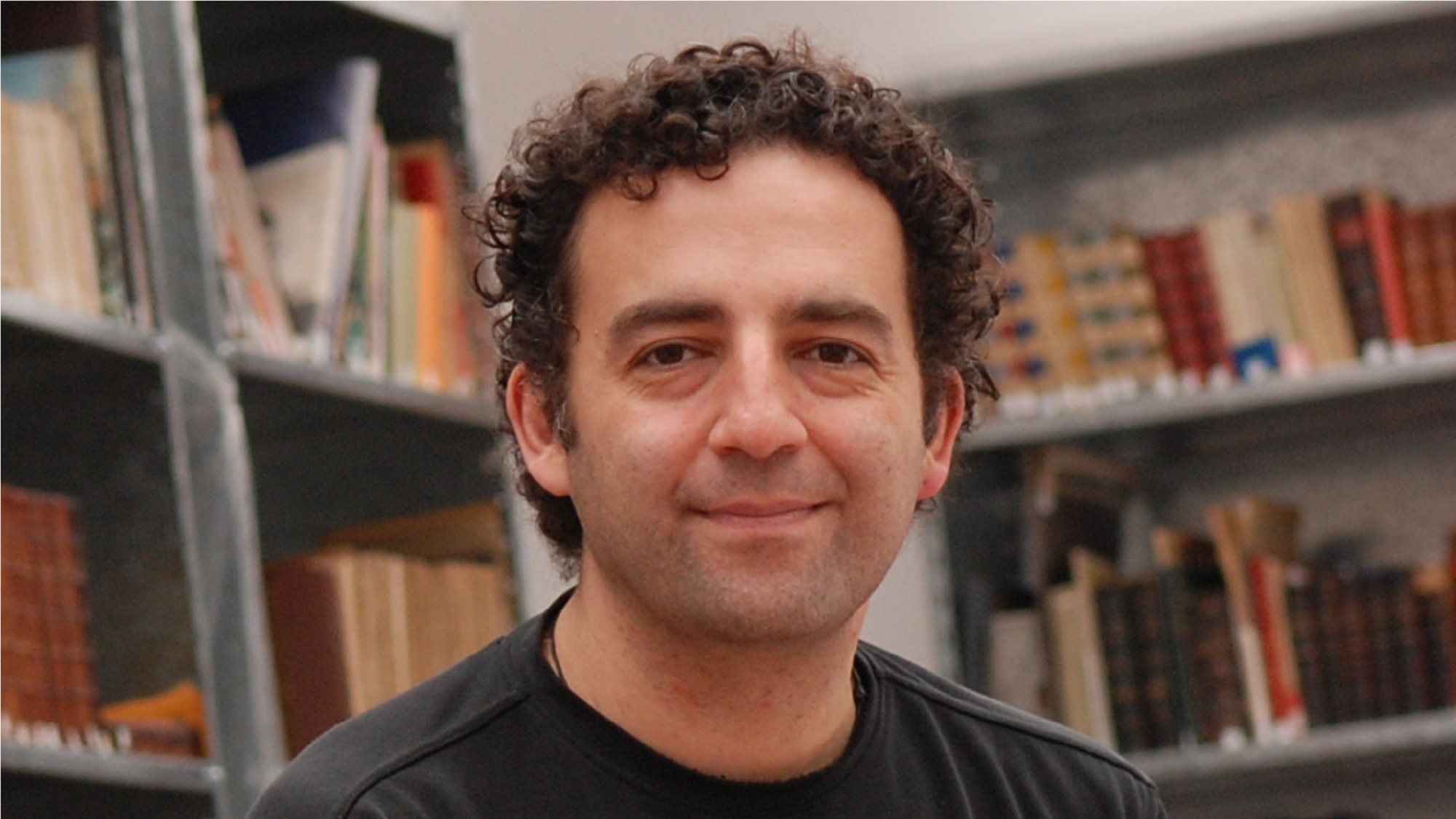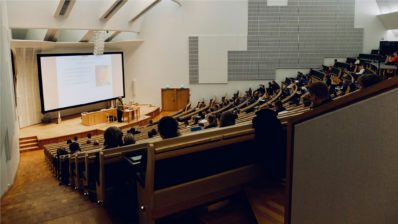What is it that makes us human? According to Rodrigo Quian Quiroga, a researcher at the Hospital del Mar Research Institute (HMRIB) since 2023, the answer to this age-old question is concept cells, which he himself discovered more than 20 years ago, when he was doing his postdoc at Caltech, California.
Concept cells are a type of neurons that fire in response to specific concepts, and are key to memory formation. “In the 20 years since their discovery, no one has managed to find them in other non-human animals. I think it’s because they don’t exist; my hypothesis is that they are exclusive to humans, and they are one of the bases of our intelligence,” explains Quiroga.
“My hypothesis is that concept neurons are unique to humans, and are one of the bases of our intelligence”
Rodrigo Quiroga (Hospital del Mar Research Institute)
And that is what now, in a recent study published in Cell reports, the Argentinian researcher and his team have shown for the first time experimentally: that the way of encoding memory is totally different in humans and in other animals. And that the way humans do it – based on concept cells – is the basis of our intelligence.
Concept cells for every emotionally relevant memory
In the last two decades we have learned that every person has a network of concept cells for every idea or concept that they have an experiential link to that they will tend to remember; it can be a person, a place, an object. And each of these cells is specifically activated by seeing or hearing that concept – although it can also recognize some other concepts, always associated. (These neurons were originally called Jennifer Aniston neurons, because they were activated in a patient when she saw photos of the actress – they would be activated with Phoebe, another character from Friends).
We can differentiate between semantic memory – my factual knowledge of the facts, e.g. the concept of ‘mother’ – and episodic memory – which is based on our personal experience, e.g. the concept of my mother Josefine. This second type of memory is located in the hippocampus, and is the one that is represented in concept neurons.
Humans and other animals: different operating systems
The article recently published by Quian Quiroga’s team delves into precisely how concept cells determine the way humans encode memory in an abstract way. So does his recent book, “Things You Would Never Believe,” in which he attempts to answer the question of what makes us human.
“The human brain is not special; it is almost the same as that of a chimpanzee; just a little bigger. But a whale’s is five times the size of ours, so it’s not a question of size. It is the way they operate that is different“, says the scientist. And the key to that difference is that concept cells offer us a higher cognitive base and the capacity for abstraction. In an analogy to try to explain the differences between our brains and that of, for example, chimpanzees, the scientist says that “it is as if they were two identical computers, but they work with two different operating systems”.
The abstract richness of the human brain
In animals, different memories, even involving the same concept in different circumstances, tend to have a different neural representation in the brain; thus interference is avoided and memories are not mixed. That is, when a mouse sees another mouse in the morning, a certain group of neurons is activated; and if it sees the same mouse in another place or at another time, another group of neurons is activated. This is called pattern separation, and we have accumulated 50 years of scientific literature showing this phenomenon.
But recent experiments by Quian Quiroga and his team show that, in humans, this is not the case. “We would run out of neurons if each memory required a different group of neurons!” exclaims the researcher. What they saw is that when they showed patients two different situations involving the same people, the same concept neurons (linked to those people) responded in the same way. That is, if I have a friend named Alejandro, every time I see him my neuron is activated by the concept of “Alejandro” – it doesn’t matter if we are in Barcelona or Cambridge, eating sushi or doing capoeira. The group of neurons that represent a concept does not change, even if the context changes. That means that memory encoding is more abstract in humans – it’s independent of details. And each memory is built with the activation of a combination of groups of neurons. For example, “Alejandro”+”Cambridge”+”capoeira” or “Alejandro”+”Barcelona”+”sushi”.
“The fact of encoding experiences regardless of the context means humans have more advanced, more abstract thinking”
Rodrigo Quian Quiroga (HMRIB)
“I think the cognitive space in rats or mice is much more limited than in humans. And ours, being richer, does not allow this separation of groups of neurons, because there would be no room to represent all the experiences we have or remember, so to speak,” says Quian Quiroga. “Coding experiences regardless of the context makes us have more advanced, more abstract thinking; it allows us to generalize and have a more developed intelligence in humans.”
From concept to concept, a walk through the world’s brains
The discovery of concept neurons was a revolution. It was made possible by the use of advanced technology that allowed the activity of individual neurons to be measured in humans, something that at the time could only be done in one place in the world: the University of California, Los Angeles. Quian Quiroga ended up there. And there he discovered the concept cells.
“Since then, the field exploded: several places in the US began to make these records, and in collaboration with my clinical colleagues, I took the technique to the United Kingdom, then to Argentina, then to Barcelona…”, recalls the researcher.
To measure this neural activity, electrodes must be inserted into the brain. So the only possibility to do this is to take advantage of when, for clinical reasons, electrodes are sometimes inserted into people with epilepsy that cannot be controlled with medication, in order to understand where epileptic seizures come from and to be able to choose the best treatment, including an eventual surgical resection of the epileptic focus. There are hundreds of hospitals where this is done, but the technology and specific knowledge of how to measure neural activity is complex, and not that common. That is why, even today, there are only about thirty places in the world where this technique can be used.
To measure the individual activity of a single neuron, electrodes inserted into the brain of people with epilepsy are used.
“I currently work with patients, always adults, from the Hospital del Mar here in Barcelona, from a hospital in Argentina with which I have been collaborating for many years, from a hospital in England, another in France and now we are establishing a collaboration with a hospital in China,” explains Quian Quiroga.
And he justifies the need for this geographical extension: “If you work only with one hospital, you are very dependent on external factors, on hospital dynamics that are beyond your control and that can affect your ability to do the studies. For example, during the COVID epidemic, all epilepsy operations were canceled for months and I could not continue with the studies. But while here in Europe everything was stopped, in Argentina I could do them, because there the peak of COVID was later. And when it arrived and in Argentina it was not possible anymore, here it slowly began to start again.”
In addition, this geographical variety can open up other interesting avenues. The lab is now starting a new project to compare populations and see if there are differences between them in the types of concept cells we find in one place or another; for example, one type of food that here generates emotional attachment and in another culture is neutral… “We can compare what things may interest an Argentinian, Spanish or Chinese person. Concept neurons tend to respond to things that are interesting and emotionally important to the person – and while an Argentinian may have many concept neurons assigned to soccer players, a Chinese will potentially have more neurons for GO players – the ancient Chinese game,” explains Quiroga.
It is clear that the study of concept cells will keep us very busy in the coming years.
Rey et al. Lack of context modulation in human single neuron responses in the medial temporal lobe. Cell Reports.







